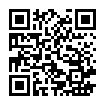Телемедицина в российских мегаполисах: проблемы и перспективы
Научная статья
Аннотация
Литература
2. Владзимирский А.В. История телемедицины — первые 150 лет // Журнал телемедицины и электронного здравоохранения. 2015. № 1. С. 10–16. EDN: YSHPJP
3. Гурылева М.Э., Нежметдинова Ф.Т. Телемедицина — преимущества и риски // Медицинская этика. 2022. Т. 10. № 1. С. 4–9. DOI: 10.24075/medet.2022.039 EDN: ATMUPR
4. Зингерман Б.В., Шкловский-Корди Н.Е., Воробьев А.И. О телемедицине «пациент-врач» // Врач и информационные технологии. 2017. № 1. С. 61–79. EDN: XXJBTJ
5. Калабихина И.Е., Матюшина Д.А. Исследование отношения населения к телемедицинским технологиям на примере медицинских онлайн-консультаций // Население и экономика. 2018. № 2 (2). С. 78–94. DOI: 10.3897/popecon.2.e36048 EDN: NZNSGP
6. Лебедев Г.С., Шадеркин И.А., Фомина И.В., Лисненко А.А., Рябков И.В., Качковский С.В., Мелаев Д.В. Эволюция интернет-технологии в системе здравоохранения // Журнал телемедицины и электронного здравоохранения. 2017. № 2. С. 63–78. EDN: ZQJRDJ
7. Рожкова Е.В. Телемедицина в контексте доступности медицинской помощи в России // Население и экономика. 2018. № 2 (2). С. 110–128. DOI: 10.3897/popecon.2.e36049
8. Русанова Н.Е. История и проблемы цифрового здравоохранения в России // Население и экономика. 2018. № 2 (2). С. 5–23. DOI: 10.3897/popecon.2.e36046
9. Хит К. Телесная работа: совместное производство клинического объекта // Социология власти. 2017. № 29 (3). С. 258–285. EDN: YTPULK
10. Шадеркин И.А. Барьеры телемедицины и пути их преодоления // Российский журнал телемедицины и электронного здравоохранения. 2022. № 8 (2). С. 59–76. DOI: 10.29188/2712-9217-2022-8-2-59-76 EDN: SOXZRL
11. Шадеркин И.А., Шадеркина В.А. Дистанционные медицинские консультации пациентов: что изменилось в России за 20 лет // Российский журнал телемедицины и электронного здравоохранения. 2021. № 7 (2). С. 7–17. DOI: 10.29188/2712-9217-2021-7-2-7-17 EDN: ROWCZD
12. Di Cerbo A., Morales-Medina J.C., Palmieri B., Iannitti T. Narrative review of telemedicine consultation in medical practice // Patient Preference and Adherence. 2015. Vol. 9. P. 65–75. DOI:10.2147/PPA.S61617
13. Greenhalgh T., Vijayaraghavan S., Wherton J., Shaw S., Byrne E., CampbellRichards D., Bhattacharya S., Hanson P., Ramoutar S., Gutteridge C., Hodkinson I., Collard A., Morris J. Virtual online consultations: advantages and limitations (VOCAL) study // British Medical Journal. 2016. Vol. 6 (1). P. e009388. DOI: 10.1136/bmjopen-2015-009388
14. Grīnfelde M. Face-to-Face with the Doctor Online: Phenomenological Analysis of Patient Experience of Teleconsultation // Human Studies. 2022. Vol. 45 (5). P. 673–696. DOI: 10.1007/s10746-022-09652-4
15. Grossman D., Grindlay K. Safety of medical abortion provided through telemedicine compared with in person // Obstetrics & Gynecology. 2017. Vol. 130 (4). P. 778–782. DOI: 10.1097/AOG.0000000000002212
16. Honaker J., King G., Blackwell M. Amelia II: A program for missing data. Journal of statistical software. 2011. Vol. 45 (7). P. 1–47. DOI: 10.18637/jss.v045.i07
17. Jung C., Padman R. Virtualized healthcare delivery: Understanding users and their usage patterns of online medical consultations. International Journal of Medical Informatics. 2014. Vol. 83 (12). P. 901–914. DOI: 10.1016/j.ijmedinf.2014.08.004
18. Little R.J.A. A Test of Missing Completely at Random for Multivariate Data with Missing Values // Journal of the American Statistical Association. 1988. Vol. 83 (404). P. 1198–1202. DOI: 10.1080/01621459.1988.10478722

Поступила: 13.03.2023
Опубликована: 23.09.2023
Все права на статью принадлежат авторам. Авторы передают права на использование статьи, в том числе на использование статьи в открытом доступе, издателю журнала на условиях неисключительной лицензии (Авторское соглашение (публичная оферта))
Принятием условий этого договора автором считается передача им материалов в редакцию через официальный сайт журнала ("Отправить рукопись") или через электронную почту редакции.










